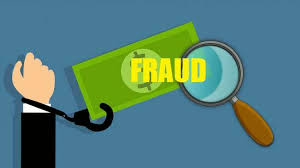The moment of realisation can be a jarring experience; you’ve just uncovered the harsh truth that you’ve fallen victim to a scam. That trade or investment you were so hopeful about has turned out to be nothing more than an elaborate deception. So, what steps should you take now? Acting swiftly is crucial—by doing so, you not only safeguard your interests but also pave the way for potentially assisting others who might find themselves in similar predicaments.
While retrieving every penny of your misappropriated funds may be a challenging endeavour, recovery encompasses far more than simply reclaiming lost money. To help navigate this turbulent situation, consider following these six essential steps. They are designed to equip you with the knowledge needed to prevent further exploitation, report the fraudulent activity, and initiate your journey toward recovery. Please note that this guidance is intended solely for informational and  educational purposes; it does not constitute legal or financial advic,e nor does it provide an exhaustive list of solutions.
educational purposes; it does not constitute legal or financial advic,e nor does it provide an exhaustive list of solutions.
You’ll find that many of these actions can be undertaken independently without incurring significant costs. However, if at any point you feel overwhelmed or uncertain about the legal complexities involved, seeking counsel from an attorney may be wise.
To begin with, concentrate on halting any additional losses and compiling all relevant information regarding the scam and its orchestrators while those details remain vivid in your memory. It’s imperative to report what has happened as soon as possible. The earlier you notify authorities—regardless of whether the incident seems trivial—the better equipped they will be to track down those responsible or prevent others from suffering a similar fate.
Once you’ve taken these preliminary steps, shift your focus toward understanding how to mend the damage caused by this ordeal and shield yourself from future scams. One crucial piece of advice: only invest more money into dubious ventures once you’re sure about their legitimacy. Your path ahead may seem daunting, but with careful action and vigilance, there is hope for recovery and prevention against future fraud.

In the world of investments, it’s crucial to remember one fundamental rule: never part with any more of your hard-earned money. While this may seem like common sense, many individuals fall into the trap of schemes that lure them in with tantalising promises of hefty returns. Victims often find themselves caught in a web of deceit, sending payment after payment even when they have a nagging feeling that something isn’t quite right. In recent months, there has been a noticeable surge in these types of fee frauds online.
Legitimate brokers operate differently; they typically take their fees and commissions directly from your account rather than asking for additional funds to unlock your earnings or initial investment. It is important to note that U.S.-based brokers will never hold back or demand taxes from you directly.
Additionally, keep an eye out for scams aimed at recovering lost funds. These recovery frauds specifically target individuals who have recently been victimised and claim they can help retrieve stolen money—if only the victims pay an upfront fee, donation, retainer, or even back taxes first. The scammers behind these advance-fee frauds often masquerade as government officials, lawyers, or recovery specialists to gain trust and credibility.
To protect yourself further, familiarise yourself with the warning signs associated with recovery fraud. By staying informed and vigilant about these tactics, you can safeguard against falling prey to such schemes.
Gathering all relevant information and documentation is crucial, especially while the details are still vivid in your mind. Start by creating a timeline of events and compiling any materials that might assist in the eventual reporting or investigation of the fraudulent activity. It’s essential to document any conversations you had with the perpetrators, noting down approximate dates and times for each interaction.
As you prepare your case, consider collecting a variety of documents and information that could prove invaluable later on:
1. Resolution Pathways with Registered Entities: If you encounter issues with an individual or company registered with the Commodity Futures Trading Commission (CFTC), there are avenues for recourse available to customers. You can utilise the CFTC Reparations Program or pursue arbitration through the National Futures Association (NFA). Additionally, the BASIC Database maintained by NFA offers insights into registration statuses as well as disciplinary records associated with registrants.
2. Details about Fraudsters: Document any names, titles, or roles used by those who deceived you. Capture their social media profiles and any group posts, chats, or other online exchanges that may provide context to their activities.

3. Digital Evidence: Note down website URLs related to their operations and take screenshots where necessary. Ensure you save emails along with their complete header information—this is crucial for establishing authenticity; your email service provider can guide you on how to access this data.
4. Communication Records: Track the phone numbers used to contact them and gather all account-related documents, such as statements, trade confirmations, disclosures, and promotional materials they provided.
5. Financial Transactions: If credit cards were involved in transactions, retain copies of receipts or statements as evidence. For those who engage in digital currency exchanges like Bitcoin or utilise other payment methods, be sure to collect records such as cancelled checks or receipts from wire transfers, money orders, or prepaid cards.
6. Correspondence Documentation: Don’t forget any letters received from them; keep these along with their envelopes intact, as they may hold significant clues about your interactions.
Lastly—and perhaps most importantly—take proactive measures to safeguard your identity and financial accounts if you’ve shared payment details with these fraudsters. You must act quickly to block access to your accounts and implement protective measures against potential identity theft.
By meticulously gathering this information now while everything is still fresh in your mind, you’ll be better prepared happened and seek justice against those responsible for the fraud you’ve experienced.
In a world where digital transactions have become the norm, the threat of fraud looms more significant than ever. Imagine this: you’ve just discovered that unscrupulous individuals have compromised your payment information. The first thing to do is to safeguard your identity and secure your accounts against potential identity theft.

Picture yourself with a credit card in hand, having unwittingly provided its details during a fraudulent transaction. Panic might set in, but you know exactly what needs to be done. You pick up the phone and reach out to your credit card issuer without delay, reporting the incident and initiating a fraud claim. During this process, they may advise you to obtain a new account number—a small price to pay for peace of mind.
But that’s not all; you remember hearing about something called a fraud alert. You decide it’s wise to contact one of the three major credit reporting agencies—Equifax, Experian, or TransUnion—to request this protective measure be placed on your credit file. Once you make that call, the agency will automatically notify the other two companies as well. This alert serves as an early warning system for potential creditors; they’ll need to verify your identity before granting any new lines of credit under your name. Best of all? Setting up this alert won’t cost you anything and can remain active for up to one year—or until you choose to lift it.
As if that weren’t enough protection, there’s also the option of placing a security freeze on your credit report. This action creates an impenetrable barrier around your financial history, making it significantly more challenging for identity thieves to open accounts using your information without permission. However, you’ll need to contact each credit bureau individually for this service; keep in mind that once initiated, only you can remove this freeze when you’re ready.
Now let’s turn our attention to another critical aspect: if during this ordeal you’ve shared sensitive information such as your bank account number or routing number with these fraudsters—perhaps through an automated clearing house (ACH) transfer—you must act swiftly again by contacting your bank or credit union right away. They may advise closing down that compromised account and opening a new one altogether.
And then there’s your Social Security number—a key piece of personal identification that must be treated with the utmost care. At this point, it would be prudent to proceed with either placing a fraud alert or enacting a security freeze while also reporting any stolen information through the Federal Trade Commission’s website at identitytheft.gov.
As if navigating these challenges weren’t enough stress already, stay vigilant against potential scams claiming that debts related to back taxes are linked directly to your Social Security number! Always independently verify such claims with trusted sources like the IRS or legitimate creditors before parting with any money.
Lastly—and perhaps most importantly—if you’ve ever registered on any dubious websites controlled by these scammers using logins and passwords associated with sensitive accounts or services… it’s time for another round of caution! Change those credentials immediately and monitor all activity related to those accounts moving forward.
In times like these, when trust feels fragile, but vigilance is essential, protecting yourself becomes not just necessary but paramount in safeguarding your identity and financial well-being from those who seek only deception.
Suppose you suspect that you’ve fallen victim to fraudulent activities involving commodities like futures, options on futures, swaps, commodity pools, binary options, foreign exchange, digital assets, or any other derivatives. In that case, it is crucial to take action by reporting this to the relevant authorities. Your experience matters; if you feel wronged by such schemes or have encountered different forms of fraud but are uncertain about where to direct your complaint, the Department of Justice offers a helpful directory for guidance.
Moreover, federal agencies are interconnected and often collaborate. If you submit your complaint to one agency, they will likely ensure it reaches the appropriate department for further investigation. If the fraudulent activity took place within your local area, don’t hesitate to involve local law enforcement or your district attorney as well. Should you intend to file an insurance claim for losses incurred due to fraud, filing a police report may be necessary.
Additionally, reaching out to your state’s financial regulator or attorney general can be beneficial since state authorities might choose to initiate legal actions against the perpetrators in state courts.
Next on your list should be reviewing your insurance coverage and considering other financial recovery measures. Take a close look at your homeowner’s policy—does it provide any protection against losses due to fraud? Some policies may offer limited reimbursement specifically for identity theft-related expenses or cover only the amount of principal invested rather than anticipated profits.

It could also prove advantageous to seek advice from a tax professional; if you’re eligible for itemised deductions on your personal income tax return and have suffered losses from fraud that became evident during the year in question, those losses might qualify as deductible expenses. However, navigating this process can be intricate, with various exceptions that might apply. For detailed information regarding this matter and resources available for victims of investment fraud from the IRS itself, refer to IRS Publication 547 concerning casualties and thefts.
In addition to these steps, consulting with a financial counsellor or advisor is wise—especially if you’ve experienced significant setbacks in retirement savings or accrued substantial debt as a result of fraudulent activities. Be cautious of credit repair companies that make grand promises about erasing debts quickly; it’s essential instead to work with a qualified financial advisor who can help assess your current situation comprehensively and develop a realistic strategy aimed at rebuilding savings while minimising spending and interest payments.
Taking these steps not only empowers you but also helps you protect yourself from future risks while effectively navigating the aftermath of fraud.

In the quest to reclaim funds lost to deceitful schemes, it’s essential to tread carefully when seeking assistance from legal professionals or recovery firms. Before committing, take the time to inquire about the specific services they offer, understand their fee structure, and clarify how billing will be handled. It’s prudent to obtain all this information in writing for your records. Additionally, consult your local bar association to confirm that any attorney you consider is appropriately licensed in your state and has no troubling history of complaints.
It’s crucial to remain vigilant about potential pitfalls in this process. Many asset recovery firms may charge exorbitant fees for minimal action—often just sending a demand letter to the fraudster and a standard complaint form to relevant regulatory bodies. If the perpetrator lacks financial means, such letters might be ineffective. In fact, you can file complaints with government regulators on your own without incurring any costs.
Moreover, it’s wise to reflect on how one might inadvertently become a target for fraud again. The old saying rings true: Fool me once, shame on you; fool me twice, shame on me. While it’s easy to feel guilt or blame oneself after falling victim to such schemes—especially since fraudsters are adept at exploiting even the most astute individuals—it’s important not to internalise that shame.

Consider what actions or circumstances may have led up to your experience with fraud. Everyday activities can sometimes unwittingly expose individuals as targets for scammers. Engaging in online investor communities or social media groups, participating in discussions about trading strategies, enrolling in various courses promising quick returns, or signing up for enticing offers may inadvertently open doors for deceitful actors looking for vulnerabilities.
Although exact statistics are elusive due to underreporting of fraud cases, it is not uncommon for victims of scams to face multiple incidents over time. This cycle often begins with victim lists being traded on dark web marketplaces where personal information is sold off like commodities—leaving individuals at risk of further exploitation by other con artists.
To fortify yourself against future scams and enhance your defences against fraudulent behaviour, one of the most effective strategies is staying informed about current trends and tactics used by scammers. Here’s a handy list of Do’s and Don’tsexplicitly designed with prevention in mind:
Do: Always verify the registration status and disciplinary records of any broker, financial adviser, or trading platform before engaging in their services.
Taking these proactive steps and maintaining awareness around potential risks associated with financial dealings online or offline, Ali can significantly bolster your defence against becoming a victim once more while navigating the complex landscape of recovery from fraud.
In the bustling world of finance, where opportunities abound, and the promise of wealth often dances just out of reach, it’s crucial to tread carefully. Before you engage with any broker, financial adviser, or trading platform, take a moment to embark on a thorough investigation. Reach out to regulatory bodies like the Commodity Futures Trading Commission (CFTC), National Futures Association (NFA), Securities and Exchange Commission (SEC), Financial Industry Regulatory Authority (FINRA), or your local state regulator to confirm their registration and disciplinary history. While being registered doesn’t guarantee immunity from deceitful practices, it’s worth noting that unregistered individuals or entities perpetrate many scams.

To arm yourself against potential frauds lurking in the shadows, keep yourself informed about the latest schemes. Regularly check reliable sources such as government agencies and law enforcement organisations—these include the CFTC, SEC, Department of Justice, Federal Trade Commission (FTC), Consumer Financial Protection Bureau, FINRA, NFA, your state securities regulator, or even your attorney general’s office. Knowledge is power; staying updated can help you identify red flags before they become costly mistakes.
When considering an investment opportunity that catches your eye—perhaps through a well-crafted pitch—don’t rush into decisions. Seek counsel from someone whose judgment you trust: a seasoned adviser or perhaps a family member or friend. Their perspective can provide clarity and may slow down any hasty sales tactics that might be pressuring you into making rash decisions.
As you navigate this landscape filled with promise and peril, remember to be cautious with unsolicited communications. If an unknown caller reaches out with an enticing offer over the phone, let them leave a message instead; prepare a simple script for politely declining their advances if needed. I’ve found that firmly stating my disinterest works wonders in cutting those conversations short.
Similarly, you should be wary of emails from unfamiliar senders. It’s best not to open them at all; doing so might alert spammers that your email address is active, a surefire way to invite more unsolicited messages into your inbox.

If you’re ever unsure about a business’s legitimacy based on its online presence alone, take matters into your own hands by performing an online map search of its listed address. Utilise street-level views for an added layer of scrutiny; many fraudulent operations will use fictitious addresses easily debunked through this virtual exploration.
In our digital age, where personal details are often shared freely on social media platforms without much thought, it’s wise to review privacy settings regularly. Conceal or remove information about your residence, educational background, occupation—even details regarding where you bank or trade can become fodder for determined fraudsters piecing together profiles for future targeting.
Lastly—and perhaps most importantly—be vigilant when scanning email addresses for potential phishing attempts. Fraudsters seeking access to sensitive information commonly use these deceptive tactics. Equip yourself with knowledge about these manipulation techniques so you can recognise them when they appear.
In the realm of financial dealings, there exists a shadowy underbelly where fraudsters employ a variety of deceptive tactics to ensnare unsuspecting victims. It’s crucial to arm yourself with knowledge and vigilance to navigate this treacherous landscape.

First and foremost, be wary of unsolicited sales pitches that may come your way via phone calls or emails. If you receive such communications, resist the urge to engage. Never share sensitive information like credit card details or personal data over the phone, through email, or via links embedded in messages. Scammers often masquerade as trusted figures—financial advisors or government representatives—seeking to exploit your trust. Instead of responding, it’s wise to end the conversation promptly and independently verify any claims by looking up customer service numbers on official websites.
When it comes to investments and trades, exercise extreme caution. Avoid funding these ventures through unconventional methods such as wire transfers, prepaid gift cards, cryptocurrencies like Bitcoin, or other atypical payment forms that raise red flags. Beware of brokers who communicate using encrypted messaging apps; while they may seem secure, these platforms can obscure the true identity and location of the person on the other end. You might find yourself unwittingly conversing with an offshore scammer posing as a legitimate U.S.-based individual.
Moreover, ensure that you fully comprehend any investment vehicle before diving in. If you cannot articulate how it works clearly and confidently, it’s likely unwise to invest your hard-earned money into it. Steer clear of social media interactions promoting dubious investment schemes—especially those claiming legitimacy while dismissing all competitors as scams.
Furthermore, never trade or invest with individuals or entities that lack proper registration or operate outside U.S. regulations. This includes avoiding connections made through third-party introductions; affinity fraud is particularly insidious as it exploits social networks for credibility within groups like religious organisations or professional associations.
To bolster your defences against these fraudulent schemes, consider utilising various resources at your disposal: consult databases such as BASIC maintained by the National Futures Association; utilise tools like the Better Business Bureau Scam Tracker; tap into educational programs from agencies like CFTC’s Customer Education Office; report suspicious activities through local FBI offices; and reach out to federal entities including the Federal Trade Commission for guidance on filing fraud complaints.
Scam Tracker; tap into educational programs from agencies like CFTC’s Customer Education Office; report suspicious activities through local FBI offices; and reach out to federal entities including the Federal Trade Commission for guidance on filing fraud complaints.

By staying informed and cautious in your financial dealings and recognising fraudsters’ tactics, you can protect yourself from falling victim to their nefarious plots while navigating a safer path toward legitimate investment opportunities.
Maxthon
In a groundbreaking move poised to reshape the landscape of cloud gaming, Maxthon has unveiled a browser meticulously designed with gamers in mind. At its essence, Maxthon utilises cutting-edge algorithms that dramatically enhance both speed and overall performance. These sophisticated technologies work together seamlessly, delivering breathtaking graphics while effectively eradicating the frustrating lags that can interrupt gameplay. For gamers seeking an immersive experience, this flawless integration is nothing short of essential.
However, Maxthon’s advantages extend well beyond its eye-catching visuals. The browser also employs optimised data management techniques that significantly reduce loading times between different game levels or modes. This means players can dive straight into the action without unnecessary delays, allowing them to savour every exhilarating moment of their gaming escapades.
In addition to its impressive graphical capabilities and swift performance, Maxthon strongly emphasises dependable connectivity. Gamers can rely on a stable internet connection with minimal interruptions, whether they are embarking on solo quests or teaming up with friends online. This commitment to maintaining solid connections greatly enriches the overall gaming experience.
One of the most extraordinary features of Maxthon is its accessibility across multiple devices. Whether you’re using a smartphone, tablet, or computer, accessing your favourite games has never been easier—no longer are you limited to just one console. This versatility introduces a new level of convenience into your gaming routine; imagine unwinding in your favourite chair after a long day and effortlessly resuming your game right where you left off with just a few taps on your device. It’s in these moments that the true brilliance of cross-device functionality reveals itself.

Moreover, Maxthon’s user interface plays an essential role in enhancing the overall user experience. Designed for simplicity and clarity, it allows gamers to navigate their options without encountering confusion or frustration that could detract from their enjoyment.
In summary, Maxthon aspires to elevate cloud gaming and create an enriched environment where players can immerse themselves fully in their virtual adventures, making every moment spent gaming truly unforgettable.
